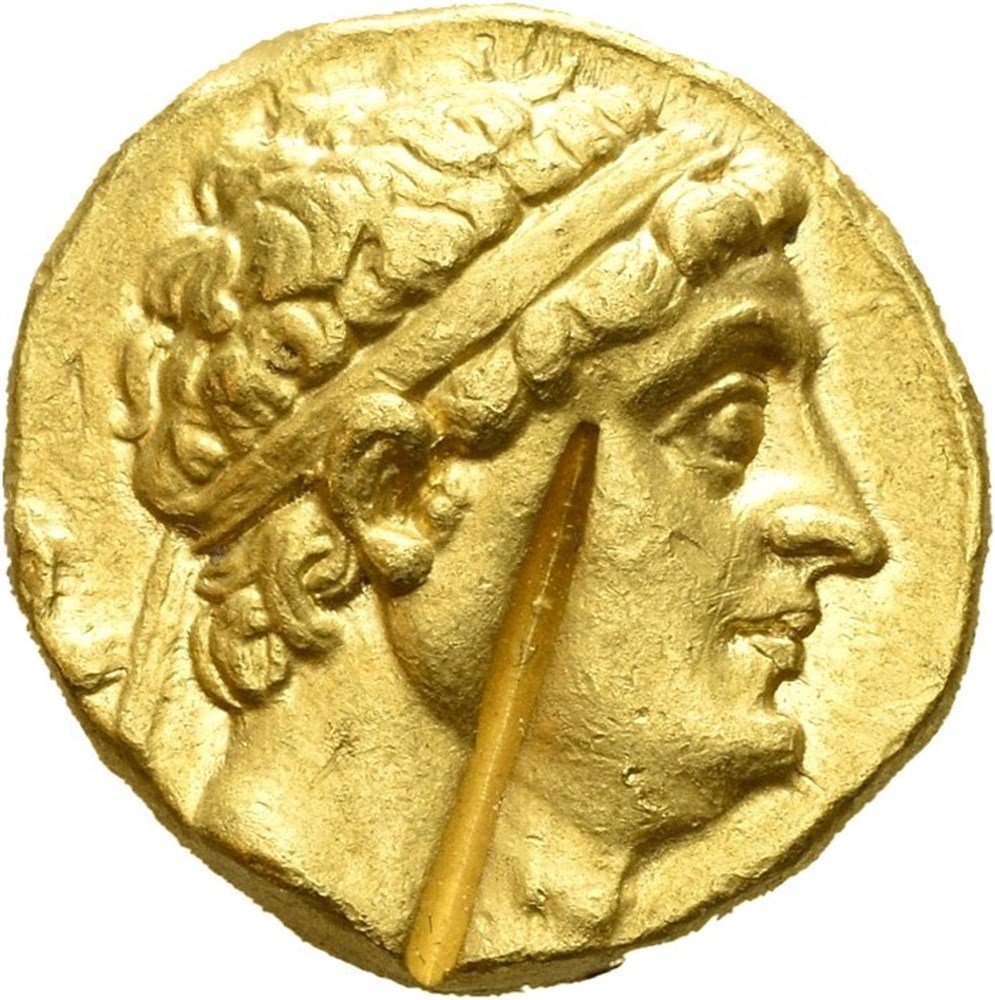BAKTRIA, Greco-Baktrian Kingdom. Diodotos I Soter (circa 256-235 BC). In the name of Antiochos II of Syria. Mint A, near Aï Khanoum. AV stater (8,25 g). Diademed head of Diadotos to right / BAΣIΛEΩΣ ANTIOXOY, Zeus Bremetes advancing left, extended left arm draped with aegis, hurling thunderbolt with right hand; eagle standing in front of Zevs at feet; N above eagle. Typical test cut on head and tiny edge cut. Area of flat strike on the reverse. Scarce.
Referanse:
Kritt, New, A7, Style 1
Referanse 2:
SC 629.1 (Antiochos II of Syria)
Referanse 3:
cf. Holt Series A, Group 7 (tetradrachm)
Proveniens:
Ex. Oslo Mynthandel Auksjon 67, lot 1489. November 26-27th, 2011. . Baktria was the last part of the Persian empire Alexander had to conquer. The local satrap Bessos offered heavy resistance and it took two years the pacify the region, which occupies areas north and south of the Hindu Kush mountains – today the northern part of Afghanistan. The silk roads from China to the west passed through, as did the inland spice roads from India. Ruling Baktria meant that you could demand toll from the caravans, you could own the serais (the road motels, also offering camel change). When the Persians took control over the Persian mountains Baktria was cut off from the Seleukid kingdom, but that did not bother them too much. Diodotos I declared independence (but issued coins in the name of the Seleukid ruler, Antiochus II, see lot 339-331.) After Euthydemos I, there were no more fuss, Baktria was a kingdom in its own right. Tracing Baktrian history is difficult as they left no records. They did not build palaces or temples, but remnants of fortifications are found. Their most striking remnants are the coins, fantastic coins, with very realistic portraiture. Eukratides I, Olav’s favorite Bactrian king, produced the largest gold coin of the antique world, 20 stater – 169,2 g, 58 mm diameter - the only known sample now in The Cabinet des Medailles in Paris. His tetradrachms are still impressive. Note that in lot 342, he has not taken the title MEGAS (great). His pose on lot 344 was copied not only by his successors, but also by the Roman Republic. The last great king of Baktria was Menander, he expanded into India (present Pakistan), but lost the area north of Hindu Kush to the Scythians and Kushans coming down from the steppes of Asia. In India he is known as a wise man under the name of Millinder, but there is no evidence of his actually conversion to Buddhism. The post Menander coins of Baktria do not meet the criteria of eye appeal, but evidence the final stages of Greek rule in upper Pakistan. The coins are bilingual, even trilingual in some cases – and then the traces of a Greek kingdom in Asia disappears in the last century BC.


